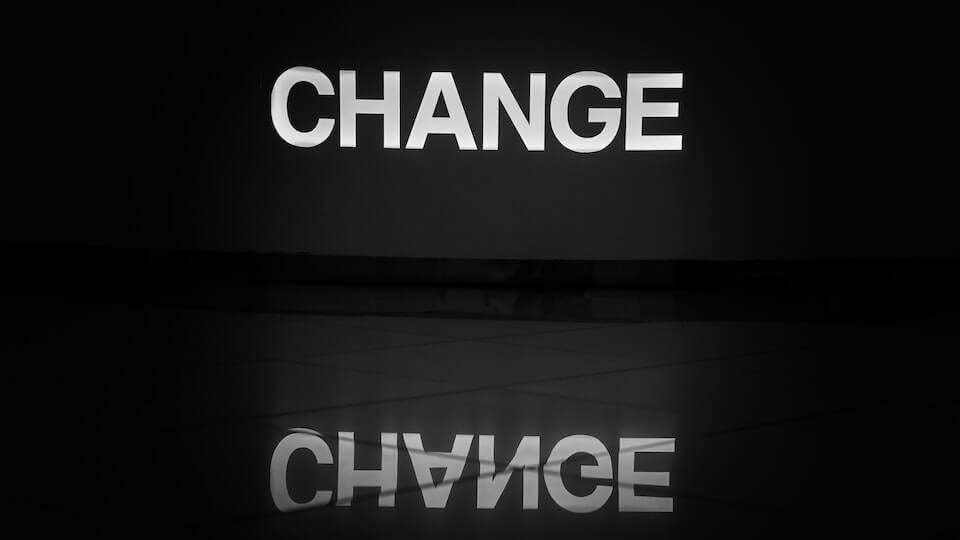
Understanding Retirement Risk and the Myths Business Owners Believe
December 8, 2021
Decentralization Through Leadership
January 2, 2022How to Create Change in Business

If there’s one thing that is consistent in this life, it’s that change is inevitable. And yet, even though change is a regular and consistent part of life, people often try to resist it. But is that always the correct response? To learn more, I recently spoke with a friend who wrote the book (literally) on this subject. Follow me and find out how to create change in business and why it’s necessary for growth.
Follow Along With The Financially Simple Podcast!
TIME INDEX:
- 00:42 – The Reality of Change, with Paul Metler
- 03:27 – Predictable Change Metrics
- 04:25 – A Common Catalyst
- 05:54 – Blowback
- 09:29 – Lessening the Pushback
- 11:37 – Where Business Owners Miss the Mark
- 12:43 – Accountability
- 13:46 – One Piece of Advice
- 15:19 – Focus
- 17:10 – Recommended Reading
- 18:32 – Summary
- 20:02 – Wrap Up
The Reality of Change
Every year, I attend several networking events here in East Tennessee. I believe these events are extremely valuable because I get to connect with so many people from all walks of life. Of course, I get to put my name out into the community and drum up business for my companies, but these events offer so much more. Beyond the basic business side of it, I get to meet and learn from brilliant professionals who have new and exciting ideas. It was at one of these events that I first met my friend, Paul Metler.
Paul is the Vice President of Content Development at Initiative One Leadership Institute and co-authored The Reality of Change with Dr. Fred Johnson. One of the reasons they wrote this book was that they wanted to shift the way business owners look at change. You see, too often, change is viewed through the lens of what is unpredictable. However, Paul says that there is a lot of predictability when dealing with change. If you can tap into the predictable side of it, you’re less likely to fear the change that must take place.
One of the things that Paul mentioned to me was that change comes with a framework. If you’ve followed my podcast and blog for any amount of time, you know that I am a big fan of planning. I believe it’s one of the most effective ways of growing your business and achieving your objectives. Essentially, your planning sessions are outlining the framework of your change. But beyond that, there are predictable metrics that can be applied to change within your organization.
How to Create Change in Business: A Common Catalyst
More often than not, you’re entering into a season of change for a reason. Understanding why you must make changes can provide some level of predictability. If you desire to make changes based on factors like money, stress, time management, team members, or other crises, you can predict that the changes you make will have an impact on those areas.
On the other hand, your catalyst could be a little more intrinsic in nature. A change could be a means of tapping into your deeper purpose or meaning within your organization and its leadership. In situations like these, you may find yourself asking what changes you need to make to reach the biggest goals you have for your business. Typically, when you’re pursuing change for these reasons, you’re doing so for greater development. Once again, you get a level of predictability from knowing why a change is needed.
How to Create Change in Business: The Blowback
Another predictable outcome of change is the blowback. Not too long ago, I wrote a blog on this topic. In it, I told the story of a deep-sea fishing trip with my dad. Despite being mocked by some of the charter captains for going out on a less-than-ideal day, my dad knew the plan and pushed forward. The result was one of the best days of fishing we’ve ever had.
When writing that blog entry, I borrowed a key statement from Paul’s book. In his book, Paul writes, “When you leave the shore, expect to hear some noise.” That single phrase immediately took me back to that day with my dad. I remembered the resistance we received. But that’s one of the most predictable aspects of change. You will always have some people who push back.
By changing, you’re challenging the deep-seated beliefs of others (and perhaps even yourself). This can cause others to become defensive. It’s not always a conscious reaction. Sometimes, the noise could even be an internal voice. This resistance could be exhibited through biting criticism, defiance, or even attempts to sabotage your efforts. But are they worth you missing your goal?
As the business owner, you have the ability to see things they can’t. Therefore, you must plan for the blowback when entering into times of change. By understanding the predictable nature of the blowback, you can prepare for it, softening its blow when it comes about. Be courageous in the face of adversity and trust your plan.
How Can You Decrease the Impact of Blowback?
Why always matters. Helping others understand the purpose can really create buy-in for your goals. You may need to even begin reexamining the ‘why,’ within your own mind if you’re listening to that little voice in your head. Because you already know that there will be blowback, create a plan to contain and redirect it before it begins.
As you push forward through the change, lean into the purpose for it. This could turn blowback into inspiration. And that’s the crux of leadership, isn’t it? Great leaders inspire others to press on through adversity because they believe in the bigger picture. So, where do business owners typically miss the mark? According to Paul, it’s most often accountability.
Folks, when you start on the path toward change, it’s never a straight line. You must measure change by the progress being made and the momentum it creates. That’s why accountability and evaluation are integral to successfully navigating the storms that inevitably come with change. Having accountability means that you’re going to give and receive feedback throughout the entire process. Some will be reaffirming while sometimes might be a little more critical. The goal has got to be to create a culture of positive accountability where your team is unafraid to provide honest feedback. When everyone realizes that they may fail but they’re not a failure, that’s how you create change in business. That’s how you generate and maintain momentum to affect lasting change.
Do you have a plan in place to affect positive change within your business? Are you concerned with navigating the inevitable blowback? Reach out to us! The team at Financially Simple has done this thousands of times and could potentially help to ease the transition.



